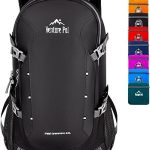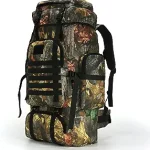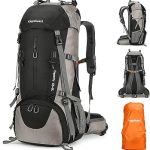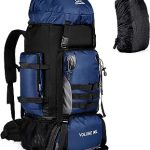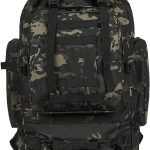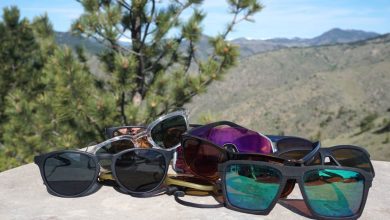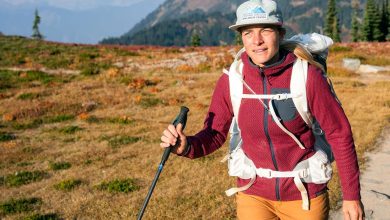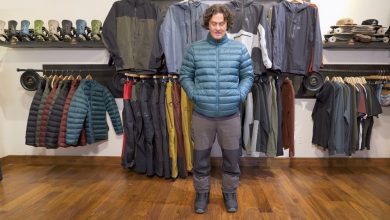Best Trekking Backpacks
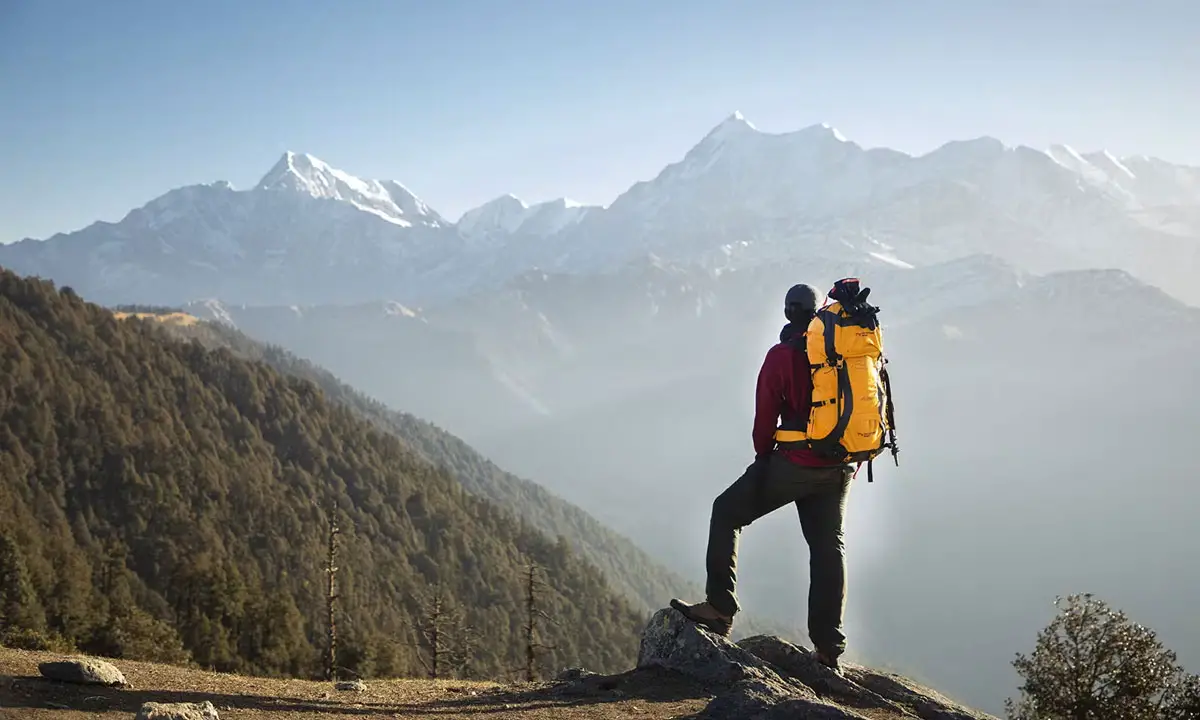
Backpacks can make or break your trekking. There, we said it. Trekking requires a lot of stuff that you need to carry. You need to pack everything from T-shirts to cameras to trekking poles. So, a nice and sturdy trekking backpack is the way to go.
Often confusion occurs while deciding the best trekking backpacks to invest in. Let’s face it there are so many backpacks available in the market, so choosing the one for you can be hard. And choosing the wrong type of backpack can also backfire.
However, do not worry because we are here to solve every trekking backpack-related problem you may encounter while purchasing one. So, go through this article to learn about various trekking backpacks and choose the right kind.
5 Best Trekking Backpacks
What is a trekking backpack?
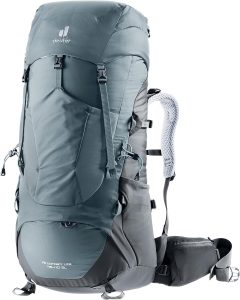
Trekking backpacks are specially designed backpacks mainly used for trekking. They mainly require four things. They must have a higher carrying capacity, fit the dimensions of the carrier’s body, and tick the various trekking backpack features that make it unique.
A trekking backpack needs to be sturdy, durable, and waterproof. It must also have various compartments to store all the necessary gear and equipment for trekking. Read along with the article as we look into all the important aspects of a good trekking backpack.
How big should my trekking backpack be?
There are various sizes of backpacks you can find in the market. But among all that are found, few can be considered to hit the mark of the perfect trekking backpack. Also, it is important to understand that trekking backpacks have different sizes. So, deciding what to invest in for your next big trek is a big step.
To make things easier to decide the type of trekking backpack to buy, let us break it down to the types of trekking backpacks according to the number of days and the size they are suitable for carrying.
Extended Journey Backpacks
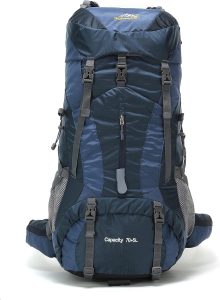
An extended journey trekking backpack will be used for trekking adventures, which may extend five days or longer. The carrying capacity of this type of trekking back will be more than 70 liters. Also, you can still carry this backpack if your next trek is during winter, even for more than one day.
Extended journey backpacks make the best winter trekking backpacks because they can carry a lot of extra clothes, sleeping bags that are comparatively warmer and hence bulkier, and all-season tents, which notoriously have many poles.
If you are a parent and wish to take your little humans for a trek, the extended journey backpack is the best for you. Because children require a lot of extra materials, this kind of trekking backpack can carry it all.
Multi Day Journey Backpacks
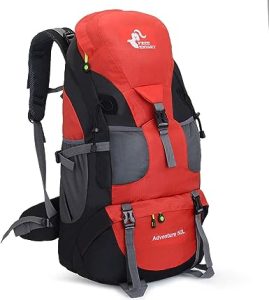
The multi day journey trekking backpacks are meant to carry for trekking for three to five days, especially during the summer season. Also, the carrying capacity of this trekking backpack is fifty to eighty liters.
However, if you wish to travel in fashion and carry many supposed luxurious items in your treks shorter than three days, then the multi day journey trekking backpack will suffice. Also, this backpack can be used for sports activities like skiing, especially around back countries.
Short Journey Backpacks
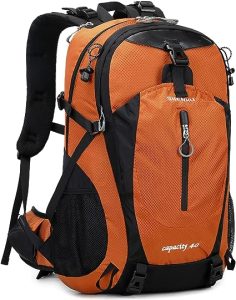
Short-journey trekking backpacks are usually carried for trekking for one to three days, and their volume ranges from thirty to fifty liters. If you are an experienced trekker who likes to pack light, brand-new, and less bulky gear and equipment, this is the trekking backpack for you.
However, purchase this bag only if you are self-disciplined and a planning freak because this bag has little carrying capacity, so that you might miss some essentials. Also, if you trek at a fast rate, carrying this lightweight trekking backpack will help increase your speed.
What should I look for in a trekking backpack?

There are many things you should look for in a trekking backpack, but if we have to summarize it, there are three main things you need to look for in a trekking backpack.
The Fit of the Trekking Backpack
A trekking backpack’s fit depends on the length of your torso and the circumference of your hips. Always check the dimensions of a trekking backpack before buying it. However, you can always adjust the backpack’s fit using a suspension. But remember that relying too much on suspensions can add to the backpack’s weight.
Your hips support your more than 80% weight. So purchasing a trekking backpack with adjustable hip-fitting suspensions while also caring about the dimensions of your waist is recommended.
Also, did you know there are trekking backpacks designed especially for female trekkers? So, if you are a female and have doubts about the size you require, buying a women’s trekking backpack would be a safe option. In addition, there are backpacks specially designed for youths too.
The Capacity of the Trekking Backpack
While looking for a trekking backpack, you want a manageable bag, which might slow you down with its weight, but you also don’t want something that is too small and doesn’t fit anything.
So, as mentioned above, choose the right volume depending on the days you are trekking. For example, for a small trek in the mountainside, a bag of 20 to 40-liter capacity will be perfect for all the essentials. However, for a trekking trip that lasts ten days, you want something bigger, preferably bigger than seventy more liters.
The Features of the Trekking Backpack

The main features of a trekking backpack are ventilation, frame type, pack access, removable daypacks, pockets, padding, sleeping bag compartment, rain cover, hydration reservoir, and attachment points.
Frame Type
As the name suggests, frameless backpacks do not have a supportive frame, so they are more for lightweight trekking. Also, some frameless backpacks might have a frame that can be easily removed. However, if you carry this type of trekking backpack with heavy loads, it might be very uncomfortable to carry.
External Frame Backpack: An external frame backpack has a frame on the external side of a trekking backpack, usually made of aluminum. This type of trekking backpack will be more suitable for carrying irregular loads like tents or kayaks and heavy loads. Finally, an external backpack provides amazing ventilation; this is the bag for you if you are a gear-organizing maniac.
Internal Frame Backpack: The internal frame backpack has the framework inside the back panel of a trekking backpack and is, therefore, more body-hugging. These types of backpacks provide stability, especially on an unstable trekking trail, since it evenly distributes load according to the carrying capacity of the backpack.
Ventilation
Ventilation in a trekking backpack makes sense. After a long day of trek, you need mesh back panels to ensure enough air gets circulated. The ventilation is usually on the back panel of a trekking backpack. Some backpacks may also have ventilation channels which also helps in ensuring air circulation.
Pack Access
In any trekking backpack, you will find top-loading openings. Packing trekking gear and equipment depends upon the needs of the trekkers. Usually, camps and overnight necessities are stored at the bottom, while things you might require while trekking are kept at the top.
But some trekking backpacks have pack access where unloading items is made easier without opening a trekking backpack from the top. However, pack access is mostly an optional addition to your backpack and may increase the backpack’s weight and cost extra.
Removable Daypacks
Some trekking backpacks have removable daypacks, which are initially inside the main section of the backpack but can be removed and used as a lighter version of the trekking backpack. Then the removable daypacks can be used to run errands or for shorter treks.
Pockets
Pockets are an essential part of trekking backpacks, and their requirement depends on person to person. While buying any trekking backpack, look at the placement and the sizes of the pockets. Various types of pockets, like elasticized ones, take the shape of the items it carries.
Another type of pocket is the belt pocket used to carry smaller items like phones, sunscreen, etc.
Shovel pockets are sewn in pockets, usually at the front of a trekking backpack, and used for emergency stashes like maps, jackets, etc.
Padding
As the name suggests, padding is a cushion, especially for your hips, lower back, and shoulders, which is present in almost all trekking backpacks found on the market.
Sleeping Bag Compartment
Usually located at the bottom of a trekking backpack sleeping bag compartment allows for removing the sleeping bags without disturbing gear and equipment.
Rain Cover
Most trekking backpacks have rain covers attached to them. Some may not even have it, and you may need to purchase it separately.
Hydration Reservoir
Internal sleeves of many trekking backpacks have a place for a hydration reservoir. They are mostly bought separately.
Attachment Points
Attachment points are used for carrying trekking poles and ice axes easily. Many trekking backpacks have tool loops that act as attachment points. There are three main types of attachment points. These are reinforced crampon patches, daisy chains, and extra gear loops.
The Comfort Level of the Trekking Backpack
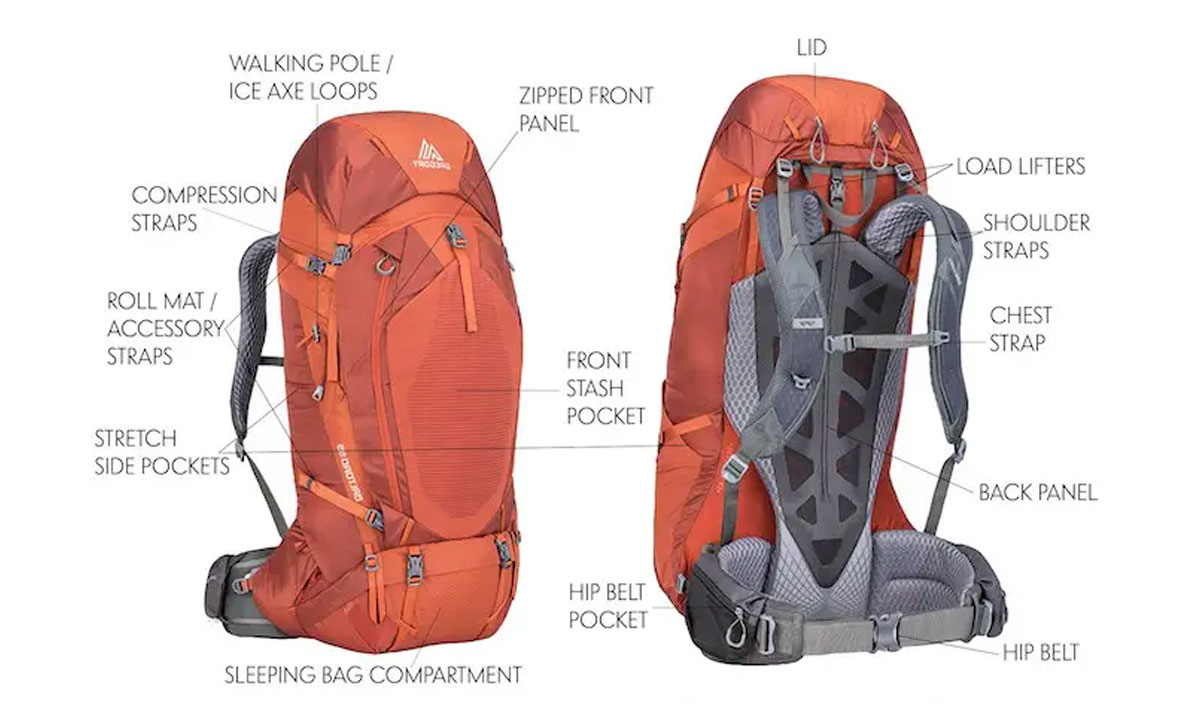
Trekking backpacks are special because they are more comfortable than normal backpacks. To ensure that your backpack is comfortable, ensure that your backpack is according to your body dimensions. Also, straps like belly, chest, and shoulder straps make a trekking backpack comfortable.
What is the difference between hiking and trekking backpacks?
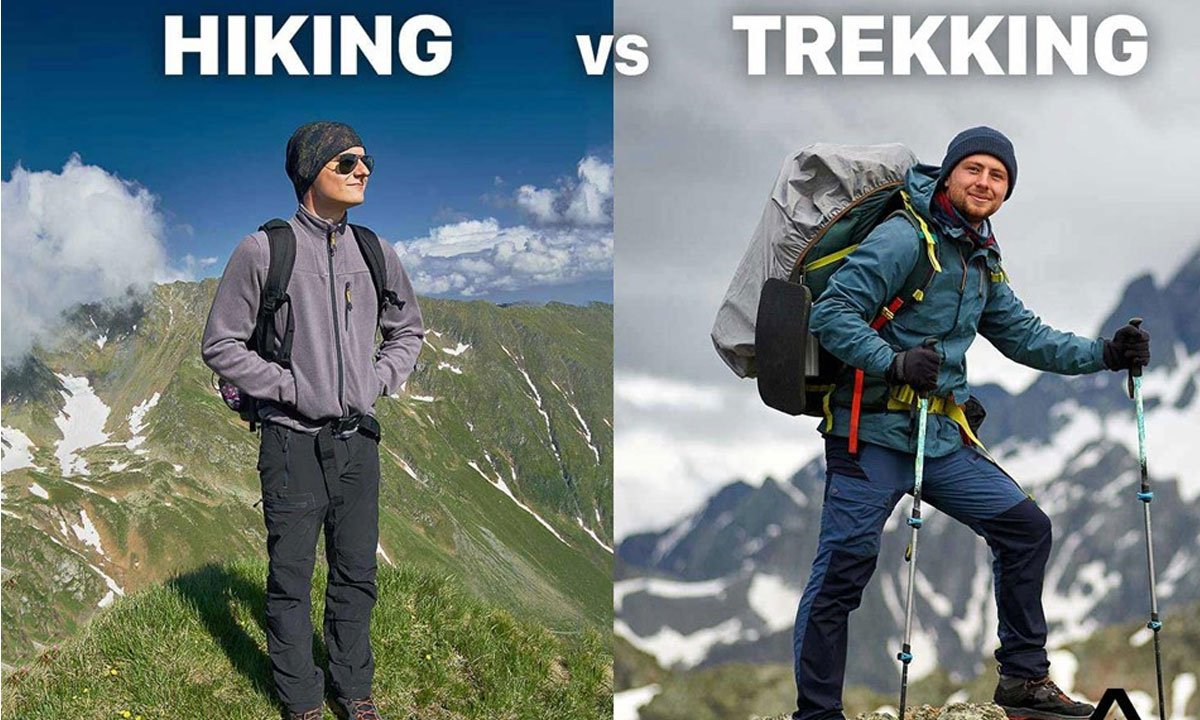
Before understanding the difference between hiking and trekking backpacks, let us first look at the difference between hiking and trekking. Hiking is easier and shorter, usually lasting for a day, and the trails are fixed and predetermined. Also, you often reach a particular hiking endpoint and return to hiking.
However, in trekking, a specific location is predetermined. But reaching that particular destination has different trails, is rugged, and is more difficult than hikes. It also requires more equipment than hikes and also more practice and perseverance.
Okay, now you may have developed a general idea about the difference between hiking and trekking backpacks, which is the volume of the backpacks.
Often hiking backpacks have lesser volume than trekking backpacks. Their column usually ranges from 15 to 30 liters, while the volume of a trekking backpack starts from 30 liters. Also, hiking backpacks are lighter than trekking backpacks. So, hiking backpacks are generally lighter than trekking backpacks since they cannot carry a lot and are also designed for a short number of days.
Are trekking backpacks allowed on flights?
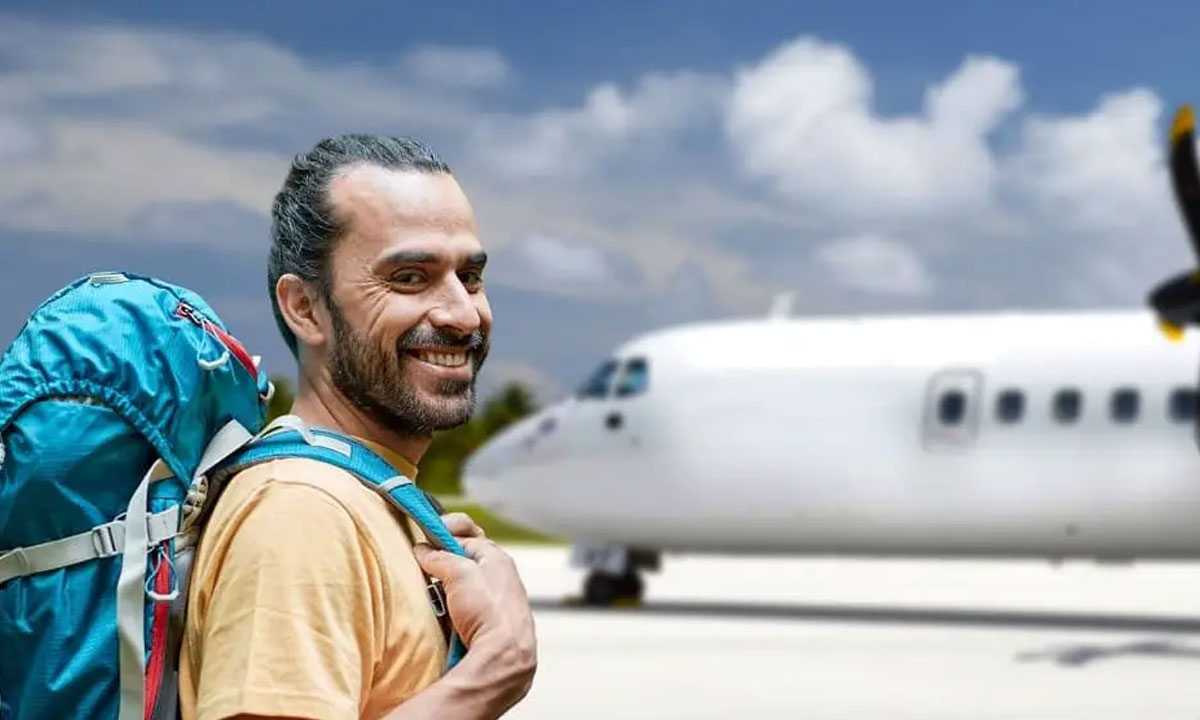
From flights, if you meant to ask, “Can you take a hiking backpack as a carry-on?” The answer is technically yes. You can technically use a trekking backpack as a carry-on, and yes, they are allowed on flights. However, the dimensions of your trekking backpack must be according to the dimensions prescribed by your flights for a general carry-on bag.
But if your flight doesn’t allow trekking backpacks on flights or to be carried as a carry-on, you must fly it as luggage. Remember to use the built-in rain cover to protect your beloved equipment and gear your trekking backpack is carrying while flying it as a piece of luggage separately. Additionally, you can use an external cover if your backpack doesn’t have a built-in rain cover.
Get Insights On:
- How Much Does It Cost To Climb Mount Everest?
- What To Include In Kilimanjaro Packing List?
- How Hard Is It To Climb Mount Everest?
How do you pack clothes in a trekking backpack?
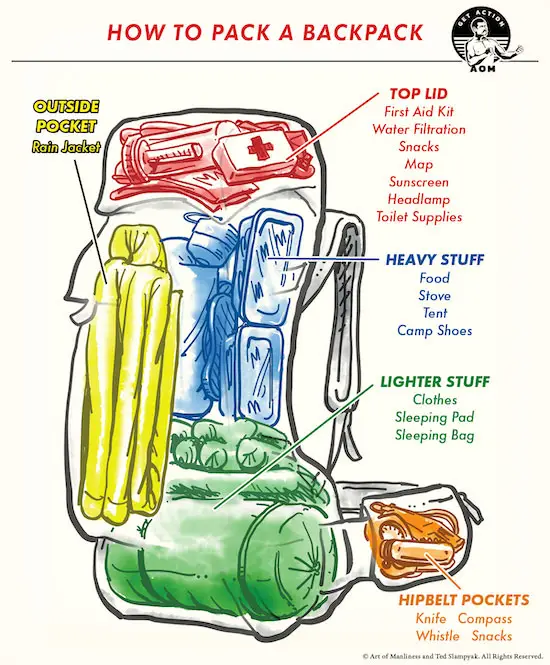
Although packing a trekking backpack depends upon personal choices and the requirements of items, we will prescribe you a general rule of thumb while packing clothes in a trekking backpack.
- Classify your clothes according to their weight.
- Use the sole of your shoes to carry smaller articles of clothing such as underwear, socks, handkerchiefs, or even smaller shirts and T-shirts inside your shoes by rolling them.
- Keep the lighter clothing items at the bottom of your trekking backpack.
- Heavy items and other trekking essentials can then go to the trekking backpack’s top.
- However, medium-weight items like jackets, umbrellas, caps, etc., can be placed on top of heavy items.
So, this is all about choosing the best trekking backpacks. Hope you will use the tips for your next great trekking adventure.
Happy Adventure!
